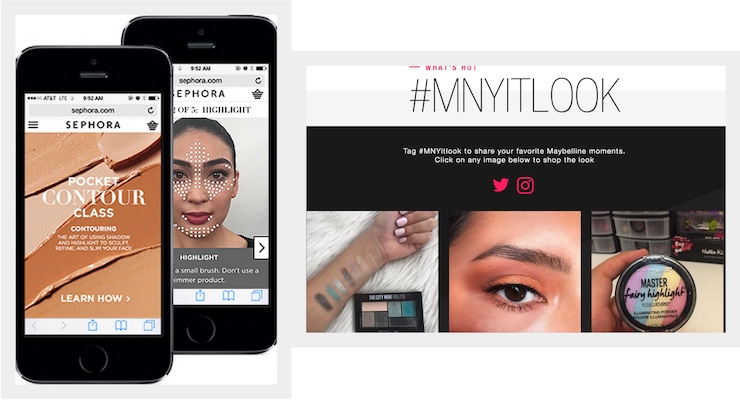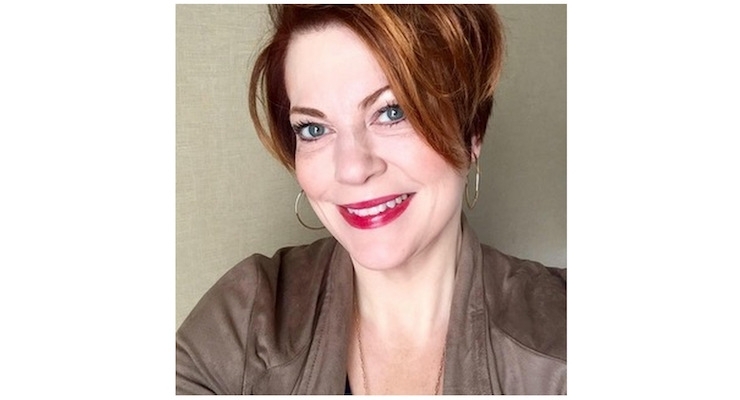Elle Morris, CEO, HMS Design08.10.17
In my last column, I discussed how beauty brands were the only ones succeeding in retail. Sephora and Ulta are enjoying growth, as is NYX, while traditional department stores are feeling the pain of the digital era; but what are the other effects that the digital world has had on the beauty industry?
How do beauty brands engage with consumers and make the most of the web as a tool?
Apps
Beauty consumers love to be in the know. They also love customization. Hence all the traffic to the brick and mortar beauty stores. Smart beauty retailers and savvy brands have created apps that give every glamour girl a personal reco – thus driving traffic into the store or online to purchase their new discovery.
Sephora smartly created the Pocket Contour Class (shown above, left) in which you scan a photo of your face, the shape is analyzed and you are shown where to apply highlighter and bronzer for that perfect Kardashian look. L’Oréal Makeup Genius is the cosmetic junkie’s dream; you can “try on” the latest looks before they launch. Scan a photo of yourself and voila! – you can see what the hottest new styles/shades look like on you, before spending a dime.
UGC – User Generated Content
UGC is HUGE with the beauty consumer. “Beauty Junkies” are often ambassadors for the brands they love. If you have been on YouTube recently, you already know there are literally over a million women with eyeshadow tutorials for beginners attached to the L’Oréal brand. A Dove Skincare routine search will yield roughly 99,400 videos. If you ask for Head & Shoulders hairstyles, you’ll be presented with over 1,000,000 results. With the rise of YouTube stars such as Kandee Johnson and Michele Phan, beauty brands can easily share videos of self-made artists using their products as content.
Savvy brands such as Maybelline (shown above, right) and Revlon are featuring UGC on their webpages and arming their customers with hashtags so that these brands can pull related posts to feature them. By linking UGC to their webpages, brands are encouraging engagement with both potential and existing consumers.
Social Media
This is where the rubber meets the road with beauty consumers: this is the place they post their truths about the beauty world. This consumer loves to share her honest point of view with her friends/fans and her brands. She will post photos of her engaging with the product, before and after shots, and tell the truth about product benefits.
The time for smoke and mirrors about what beauty products deliver is long gone. The words we hear repeatedly when it comes to a brand’s communication with consumers are authenticity and transparency. If a consumer has an issue with a brand and voices it on social media, the whole world is watching for how that brand will respond.
If the response feels right for the brand (the right tone of voice acknowledges and addresses the issue to the consumer’s satisfaction), the brand can keep its current consumer base happy and perhaps gain new ones through positive sharing on social media. And the converse is equally as true.
For beauty brands to successfully engage with consumers (both existing and potential), a strategic and agile digital presence is critical. Investing in apps, UGC and social media are a few tactics that beauty brands can leverage to magnify their digital presence. Over time, these brands will learn what their consumers respond to best and will adapt their approach to best engage with them.






























